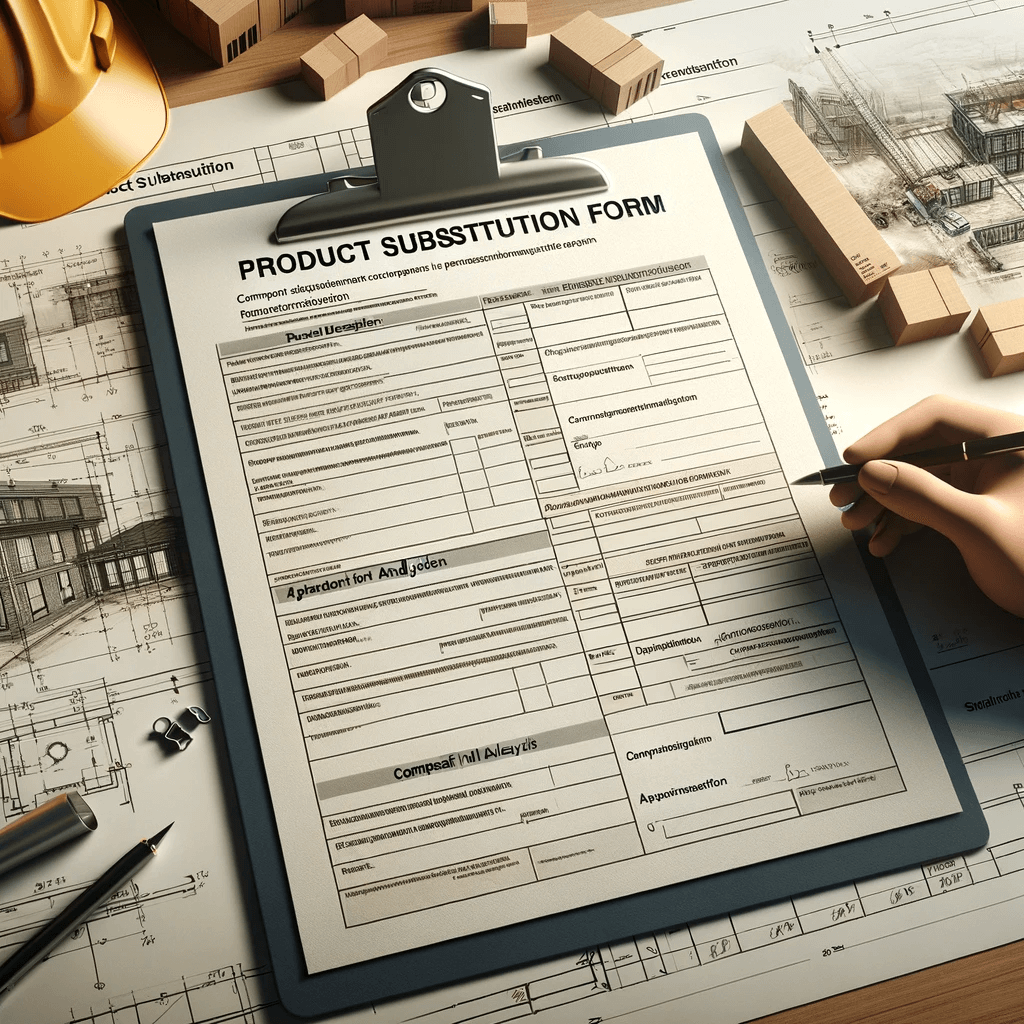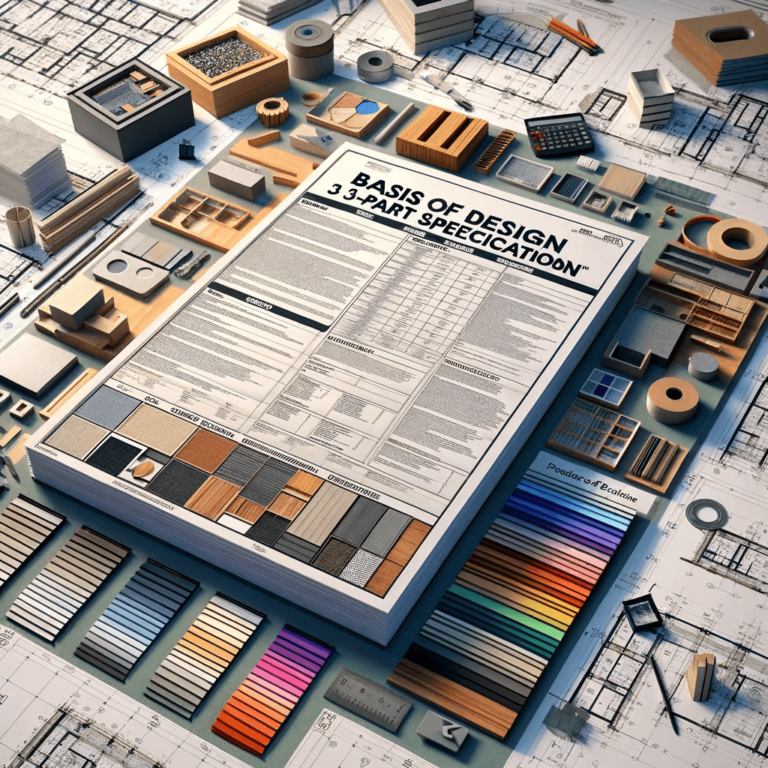Substitution Requests: 5 easy rules to follow
On commercial construction projects, submitting product substitutions are common. The practice of supplying documentation and following guidelines is often misunderstood. So we’re sharing more about how to submit a product substitution request form to make the process easier for building product manufacturers and contractors.
Before we start, what is a product substitution? Product substitutions are generated by a general contractor as a written request to the design professional to review a product that has not been specified on a project before it can be incorporated into the work. The design professional returns a written approval or rejection of the proposed product.
This process is essential as we have accountability for what is being installed and assurance a product meets the specified requirements. The Design professional will determine if products during the submittal process meet the project’s design intent and where the contractor can incorporate the product into the work. If the product substitution is “rejected,” the contractor can resubmit additional documentation or supply a specified product.
So learning the product substitution process is essential for building product manufacturers and contractors working on submittals. But with some planning and structure, substitutions don’t have to be so difficult.
So let’s dive in and learn more about the 5 rules to follow.
Submit a Substitution Request Form
What is it? A substitution request form is a written form that is supplied by the contractor for the design professional to review. A design professional will often include the form in Division 01, or supply guidelines on how substitutions will be reviewed. Most contractors use fill-in-the-blank substitution request form if the project does not offer a substitution form.
If you’re submitting a product that has not been specified, a substitution request form must be submitted with product documentation to assist the design professionals’ review process. The review will determine compliance with what has been specified and the design intent of the project.
If you supply a product specified during the submittal process, label it as a submittal per plans and specifications. There is no need to submit the product substitution request form.
Make sure you properly label your submittals. If you avoid proper labeling, it’s a sure way of receiving a “rejected/resubmit” response from the Design professional.

Reasons for Valid Substitution Requests in Construction
The process of substitution involves proposing alternative materials or products to those originally specified for a project. While this might seem complex, there are several valid reasons why you might propose a substitution for the architect or owners to approve your request.
Value Engineering
Value engineering, often referred to as cost-cutting, is a crucial reason for substitution requests. It originated from the need to navigate materials shortages and enhance engineering efficiency after World War II. Essentially, value engineering aims to identify more cost-effective ways to achieve the same results. In practice, it often involves replacing specified materials with cheaper alternatives. While this may raise concerns among architects, who bear the liability for these choices, it’s a strategy that can contribute to project cost savings without compromising quality.
Material Scarcity
Occasionally, construction projects encounter disruptions in supply chains, leading to material shortages. When faced with such challenges, substitutions become a necessity to complete the project on schedule. In many cases, suitable substitutions exist, especially when dealing with materials that have similar properties. These substitutions help ensure the project can proceed smoothly despite unexpected supply chain issues.
Availability of Other Materials
Contractors frequently accumulate surplus materials, whether from mistaken purchases, attic stock, or excess inventory. This surplus material can provide an opportunity to offer owners a discount by substituting it for specified materials. This not only helps contractors reduce excess inventory but also allows owners to benefit from cost savings without compromising quality.
New Products on the Market
Construction specifications often rely on established materials and products. However, the industry is continually evolving, with new and improved products entering the market. In such cases, a substitution may be warranted to replace outdated or less efficient materials with superior alternatives. In some instances, specified materials may become so obsolete that they are no longer available, necessitating substitutions to keep the project moving forward.
Substitution Request Deadline
Why is it important? The written product substitution request to the Design professional for review is on a deadline after the bidding and negotiating phase of the project.
Substitutions are time-sensitive, and the deadline is specified in Division 01. The first 30 to 90 days after the agreement between the owner and contractor is executed needs to be observed.
It is your responsibility to drive the substitution request, as you assume the liability for any cost difference if the substitution is not approved. Read Division 01 for specifics and ask the contractor for more information on substitutions deadlines.
Missing the deadline is a sure way of receiving a substitution rejection without the Design professional review.
Supply Substitution Documentation
Why is documentation important? The written request to review a product substitution requires the design professional to compare what has been specified vs. what you are submitting. If you don’t supply enough information or incomplete documentation, the Design professional will not have enough information to perform the review process.
Before you submit a product substitution:
– Read the specifications and determine the scope of work.
– If the specification requires six products, don’t supply a data sheet for a single product.
– Be clear and supply complete information to make the review process easier.
Ok, some of you may think this is obvious, but it is becoming common to receive limited documentation or supporting information for product substitutions. The design professional is performing a technical review, so supplying information is essential.
Create a Comparison Form
A 3-part specification organizes information into, as you may have guessed, three parts.
Part 1 of the specification will list submittal requirements, Part 2 lists manufacturers and product requirements, and Part 3 is the execution. Create a comparison of what is being submitted based on the three parts of the specification. This will help the Design Professional quickly review the product substitution.
One golden rule to remember about substitution comparisons is to forget about the competition. Compare the proposed product substitution against the specified requirements.
An easy way to compare the specified requirements is to create an easy-to-follow comparison.
Make it look good!
The more complete and easier the proposed product substitution is to review, the better the outcome. I usually recommend having a 2nd person in the office review the package to see if easy to follow and has a logical flow.
What type of information makes a product substitution look good? A clearly labeled cover sheet, a copy of the project specification, and pictures of the proposed product installed. Project references, color options, technical contacts, samples, a copy of the manufacturer’s warranty, and letters of reference from past projects are all supporting documentation I recommend.
Conclusion
The next time you submit a product substitution request form, make sure you follow these 5 easy rules:
- Supplying substitution request form
- Include supporting documentation
- Follow the deadline requirements
- Create a comparison to the specification
- Making it look good!



